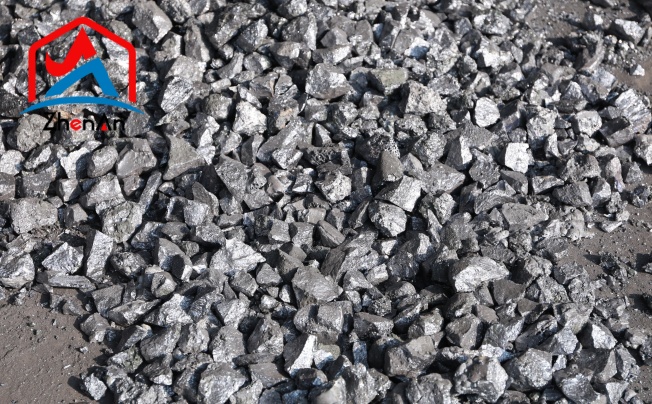Manganese in Nature
Geological Origins
Manganese, an essential transition metal, owes its existence to a fascinating geological journey spanning millions of years. The genesis of manganese traces back to the Earth's crust, where it predominantly occurs as a mineral in various geological formations. One of the primary processes responsible for manganese deposition is known as supergene enrichment, where manganese is leached from rocks and concentrated in secondary deposits through chemical weathering.
Additionally, hydrothermal activity and volcanic eruptions play pivotal roles in redistributing manganese-rich fluids, contributing to the formation of diverse manganese deposits across the globe. Understanding these geological processes provides valuable insights into the distribution and concentration of manganese resources, guiding exploration and extraction efforts.
Mining Manganese
Mining manganese is a complex endeavor that demands meticulous planning, advanced technology, and a deep understanding of geological formations. The extraction of manganese typically involves surface or underground mining operations, depending on the depth and accessibility of the deposits. Surface mining methods, such as open-pit mining, are often employed for shallow deposits, where large machinery is utilized to remove overburden and expose manganese-rich ore bodies.
In contrast, underground mining techniques, including shaft mining and drift mining, are employed for deeper deposits, requiring specialized equipment and safety measures to access the ore while minimizing environmental impact. These mining endeavors are essential for tapping into the vast reserves of manganese scattered beneath the Earth's surface, fueling various industrial applications and economic development.
Manganese Ores
Manganese ores encompass a diverse array of mineral compositions, reflecting the geological processes that shaped their formation and the unique chemical environments in which they originated. Among the myriad manganese ores, three notable varieties stand out for their distinct characteristics and geological significance: pyrolusite, psilomelane, and rhodochrosite.
Defining Purity
Purity, in its essence, refers to the absence of impurities or contaminants within a substance.
From a chemical standpoint, purity is often quantified through analytical techniques such as spectroscopy, chromatography, and mass spectrometry. These methodologies allow scientists to identify and quantify the presence of impurities down to minute concentrations, ensuring that the final product meets the desired specifications.
Moreover, purity can also be evaluated based on physical characteristics such as crystalline structure, particle size distribution, and surface morphology, all of which contribute to the overall quality of the material. Furthermore, perspectives on purity can differ significantly across industries and applications.
What may be considered pure in one context may not suffice in another, emphasizing the importance of tailoring purification processes to meet specific requirements. Whether it be in pharmaceuticals, electronics, or metallurgy, the pursuit of purity is a relentless endeavor driven by the relentless pursuit of excellence and reliability.
Refining Processes
The journey towards attaining the purest form of manganese is fraught with challenges and complexities, necessitating sophisticated refining processes that can effectively eliminate impurities while preserving the integrity of the element. Two primary methods stand out in this pursuit: pyrometallurgical and hydrometallurgical techniques.
Pyrometallurgical Methods
In the case of manganese, pyrometallurgical methods such as smelting and roasting are employed to remove impurities and produce high-purity manganese compounds or metals. Smelting, a cornerstone of pyrometallurgy, involves the heating of manganese ores in the presence of reducing agents such as carbon or coke.
This process facilitates the reduction of manganese oxides to their metallic form, which can then be further refined through processes like electrolysis or carbon reduction to enhance purity. Similarly, roasting involves heating manganese ores in the presence of air or oxygen to remove volatile impurities and convert manganese minerals into more readily reducible forms.
Hydrometallurgical Techniques
Hydrometallurgy, on the other hand, harnesses the power of aqueous solutions to dissolve and separate metals from their ores. This method offers distinct advantages, particularly in the purification of manganese, where complex ores and high levels of impurities pose significant challenges for traditional pyrometallurgical approaches.
Hydrometallurgical techniques such as leaching, solvent extraction, and precipitation enable selective dissolution of manganese compounds while leaving undesirable impurities behind. Leaching, a fundamental step in hydrometallurgy, involves the dissolution of manganese ores in acidic or alkaline solutions, allowing for the selective extraction of manganese ions while minimizing the leaching of other elements.
Solvent extraction, meanwhile, facilitates the separation of manganese from other metal ions through selective extraction into organic solvents. Subsequent precipitation steps then enable the recovery of high-purity manganese compounds through controlled crystallization or chemical reactions.
Applications of Pure Manganese
Steelmaking
Subtly intertwined with the skeleton of modern civilization, steel stands as the backbone of industries ranging from construction to transportation. Within this robust alloy lies manganese, a silent but indispensable partner contributing to its resilience. Manganese's affinity for oxygen and sulfur renders it a potent deoxidizer and desulfurizer in steel production.
By scavenging these impurities, manganese enhances the metal's cleanliness and ductility, crucial qualities for crafting high-quality steel products. Moreover, manganese's remarkable strengthening effect, achieved through solid solution strengthening and grain refinement, elevates steel's tensile strength and hardness, making it ideal for applications demanding durability and longevity.
Batteries
In the ever-evolving landscape of energy storage, manganese emerges as a stalwart contender, propelling the trajectory toward sustainable power solutions. Within rechargeable lithium-ion batteries, manganese plays a pivotal role in the cathode's composition. Specifically, manganese oxide, particularly in its spinel form, serves as a versatile cathode material due to its high energy density, excellent stability, and cost-effectiveness.
This manganese-based cathode chemistry not only facilitates the development of affordable and efficient energy storage systems but also mitigates concerns surrounding the environmental and geopolitical implications of relying solely on cobalt-rich cathodes. Furthermore, manganese's abundance and low toxicity position it favorably in the pursuit of scalable and eco-friendly battery technologies, heralding a future where clean energy is both accessible and sustainable.
Catalysts
As a catalyst, manganese's versatility shines, facilitating a myriad of reactions spanning from oxidation and reduction to hydrogenation and dehydrogenation. In organic synthesis, manganese-based catalysts catalyze transformations crucial for pharmaceuticals, agrochemicals, and fine chemicals, offering greener and more efficient pathways to complex molecular architectures.
Moreover, in environmental remediation, manganese oxide catalysts showcase their prowess in purifying water and air by decomposing pollutants and facilitating redox reactions. Beyond traditional catalysis, manganese's enzymatic role in biological systems underscores its significance in sustaining life itself, underscoring its timeless allure in the realm of chemical transformations.






